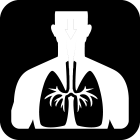 Causa probable
Causa probable
 Puede causar
Puede causar
 Podría causar
Podría causar
Arsenic
¿Cómo puede este químico afectar a mi salud?
Efectos agudos (a corto plazo)


Fuentes de documentación
Peligro Directo » Tóxico para humanos y animales
Respirador
- H301 - Toxic if swallowed [Acute toxicity (oral) - Category 3]EU - GHS (H-Statements) Annex 6 Table 3-1European Union / European Commission (EU EC)
- H331 - Toxic if inhaled [Acute toxicity (inhalation) - Category 3]EU - GHS (H-Statements) Annex 6 Table 3-1European Union / European Commission (EU EC)
- H331 - Toxic if inhaled [Acute toxicity (inhalation) - Category 3]GHS - KoreaRepublic of Korea - National Institute of Environmental Research (NIER)
- H302 - Harmful if swallowed [Acute toxicity (oral) - Category 4]GHS - KoreaRepublic of Korea - National Institute of Environmental Research (NIER)
- Class D1A - Very toxic material causing immediate and serious toxic effectsQuébec CSST - WHMIS 1988Québec Workplace Health and Safety Commission (Commission de la santé et de la securite du travail (CSST))
- H302 - Harmful if swallowed [Acute Toxicity (oral) - Category 4]GHS - JapanGovernment of Japan
- H300 - Fatal if swallowed [Acute toxicity (oral) - Category 1 or 2]GHS - MalaysiaMalaysia Department of Occupational Safety and Health
- H331 - Toxic if inhaled [Acute toxicity (inhalation) - Category 3]GHS - MalaysiaMalaysia Department of Occupational Safety and Health
- H301 - Toxic if swallowed [Acute toxicity (oral) - Category 3]GHS - AustraliaSafe Work Australia
- H331 - Toxic if inhaled [Acute toxicity (inhalation) - Category 3]GHS - AustraliaSafe Work Australia
- Acute inhalation toxicity category 2GHS - New ZealandTe Mana Rauhī Taiao (Aotearoa New Zealand EPA)
- Acute oral toxicity category 2GHS - New ZealandTe Mana Rauhī Taiao (Aotearoa New Zealand EPA)
Peligro Directo » Irritación ocular
Respirador
- H319 - Causes serious eye irritation [Serious eye damage / eye irritation - Category 2]GHS - JapanGovernment of Japan
Arsenic Compounds » Tóxico para humanos y animales
Estas fuentes de documentación se refieren a un grupo de compuestos que contienen esta sustancia química:
- Acute toxicity from inhalation exposures - TSCA Criteria metUS EPA - PPT Chemical Action PlansUS Environmental Protection Agency (US EPA)
- Chronic toxicity from inhalation exposures - TSCA Criteria metUS EPA - PPT Chemical Action PlansUS Environmental Protection Agency (US EPA)
Efectos crónicos (a largo plazo)








Fuentes de documentación
Peligro Directo » Anomalías congénitas
Respirador
- Developmental NeurotoxicantG&L - Neurotoxic ChemicalsLancet: authors Philippe Grandjean & Phil Landrigan
Peligro Directo » Cáncer
Respirador
- (1986) Group A - Human CarcinogenUS EPA - IRIS CarcinogensUS Environmental Protection Agency (US EPA)
- Group 1 - Agent is Carcinogenic to humansIARCInternational Agency for Research on Cancer, World Health Organization (IARC)
- Occupational CarcinogenUS CDC - Occupational CarcinogensUS Centers for Disease Control (US CDC)
- Known to be a human CarcinogenUS NIH - Report on CarcinogensUS Department of Health & Human Services - National Institutes of Health (US NIH)
- Carcinogen Group 1 - Substances that cause cancer in manMAKMAK Commission of Germany (Deutsche Forschungsgemeinschaft)
- H350 - May cause cancer [Carcinogenicity - Category 1]GHS - KoreaRepublic of Korea - National Institute of Environmental Research (NIER)
- Carcinogenicity category 1GHS - New ZealandTe Mana Rauhī Taiao (Aotearoa New Zealand EPA)
- H350 - May cause cancer [Carcinogenicity - Category 1A]GHS - JapanGovernment of Japan
- H350 - May cause cancer [Carcinogenicity - Category 1A or 1B]GHS - AustraliaSafe Work Australia
Peligro Directo » PBT (sustancia tóxica bioacumulable persistente)
Respirador
- Priority Persistent Pollutant - Tier 1OR DEQ - Priority Persistent PollutantsOregon Department of Environmental Quality (ORDEQ)
Peligro Directo » Alteración endocrina
Respirador
- Potential Endocrine DisruptorTEDX - Potential Endocrine DisruptorsThe Endocrine Disruption Exchange (TEDX)
Peligro Directo » Daño genético
Respirador
- Germ cell mutagenicity category 2GHS - New ZealandTe Mana Rauhī Taiao (Aotearoa New Zealand EPA)
- Germ Cell Mutagen 3aMAKMAK Commission of Germany (Deutsche Forschungsgemeinschaft)
- H341 - Suspected of causing genetic defects [Germ cell mutagenicity - Category 2]GHS - AustraliaSafe Work Australia
Peligro Directo » Daño reproductivo
Respirador
- H361 - Suspected of damaging fertility or the unborn child [Toxic to reproduction - Category 2]GHS - JapanGovernment of Japan
Peligro Directo » Otros efectos para la salud
Respirador
- H372 - Causes damage to organs through prolonged or repeated exposure [Specific target organs/systemic toxicity following repeated exposure - Category 1]GHS - JapanGovernment of Japan
- H370 - Causes damage to organs [Specific target organs/systemic toxicity following single exposure - Category 1]GHS - JapanGovernment of Japan
- H373 - May cause damage to organs through prolonged or repeated exposure [Specific target organ toxicity - repeated exposure - Category 2]GHS - AustraliaSafe Work Australia
- Specific target organ toxicity - repeated exposure category 1GHS - New ZealandTe Mana Rauhī Taiao (Aotearoa New Zealand EPA)
Arsenic Compounds, Inorganic » Cáncer
Estas fuentes de documentación se refieren a un grupo de compuestos que contienen esta sustancia química:
- CarcinogenCA EPA - Prop 65California Environmental Protection Agency (CA EPA)
Arsenic Compounds » Otros efectos para la salud
Estas fuentes de documentación se refieren a un grupo de compuestos que contienen esta sustancia química:
- Chronic cardiovascular, renal and musculoskeletal effects - TSCA Criteria metUS EPA - PPT Chemical Action PlansUS Environmental Protection Agency (US EPA)
Arsenic Compounds » Cáncer
Estas fuentes de documentación se refieren a un grupo de compuestos que contienen esta sustancia química:
- Known human carcinogen - TSCA Criteria metUS EPA - PPT Chemical Action PlansUS Environmental Protection Agency (US EPA)
Arsenic Compounds » Daños en el cerebro o el sistema nervioso
Estas fuentes de documentación se refieren a un grupo de compuestos que contienen esta sustancia química:
- Neurotoxicity - TSCA Criteria metUS EPA - PPT Chemical Action PlansUS Environmental Protection Agency (US EPA)
Peligros inherentes

Fuentes de documentación
Peligro Directo » Lista restringida
Respirador
- Cancer causing substances subject to workplace management or avoidanceUS OSHA - CarcinogensUS Department of Labor
- Red List substance to avoid in Living Building Challenge V2.1 projectsLiving Building Challenge 2.1 - Red List of Materials & Chemicals (retired in 2014)International Living Future Institute (ILFI)
- Precautionary list of substances recommended for avoidanceP&W - Precautionary ListPerkins+Will (P+W)
- Chemicals of high concernSCHF - Hazardous 100Toxic-Free Future (formerly Safer Chemicals, Healthy Families (SCHF))
- Candidate Chemical ListCA SCP - Candidate ChemicalsCalifornia Department of Toxic Substance Control (CA DTSC)
- Red List substances to avoid in Living Building Challenge V3 projectsLiving Building Challenge 3.0 - Red List of Materials & Chemicals (retiring December 31, 2024)International Living Future Institute (ILFI)
- V3 2014 Substance of Concern ListBIFMA - e3/level Annex B list of chemicalsBusiness and Institutional Furniture Manufacturers Association (BIFMA)
- Certain MetalsGSPI - Six Classes Precautionary ListGreen Science Policy Institute (GSPI)
- Substances restricted under REACHEU - REACH Annex XVII non-CMRsEuropean Union / European Commission (EU EC)
- Ingredients that are Prohibited for Use in Cosmetic ProductsHealth Canada - Cosmetic Ingredient HotlistHealth Canada
- Chemicals of High ConcernMDH - Chemicals of High Concern and Priority ChemicalsMinnesota Department of Public Health
- Chemicals of High Concern to ChildrenWA DoE - Chemicals of High Concern to ChildrenWashington State Department of Ecology (WA DOE)
- Annex II - Prohibited SubstancesEU - Cosmetics RegulationEuropean Union / European Commission (EU EC)
- Designated ChemicalCA DTSC - Biomonitoring California Chemical ListCalifornia Department of Toxic Substance Control (CA DTSC)
- CoHC List (non SVHC)CPA - Chemical FootprintClean Production Action (CPA)
- ZDHC - MRSL v1.1 for Textiles and Synthetic Leather ProcessingZDHC - MRSL v1.1Zero Discharge of Hazardous Waste Chemicals Programme
- ZDHC - MRSL v1.1 for Natural Leather ProcessingZDHC - MRSL v1.1Zero Discharge of Hazardous Waste Chemicals Programme
- Red List substances to avoid in Living Building Challenge V3.1 projectsLiving Building Challenge 3.1 - Red List of Materials & Chemicals (retiring December 31, 2024)International Living Future Institute (ILFI)
- Red List substances to avoid in Living Building Challenge V4.0 projectsLiving Building Challenge 4.0 - Red List of Materials & Chemicals - Effective February 1, 2025International Living Future Institute (ILFI)
- 2019 Substance of Concern ListBIFMA - e3/level Annex B list of chemicalsBusiness and Institutional Furniture Manufacturers Association (BIFMA)
- Tier 1 “Do Not Use Chemicals” for EveryoneCampaign for Safe Cosmetics’ Red List of Chemicals of ConcernCampaign for Safe Cosmetics
- Chemicals of High Concern to ChildrenVermont Chemicals of High Concern to ChildrenVermont Environmental Health Division
- Reportable ChemicalsMA Toxics Use Reduction Act (TURA) listed substancesMassachusetts Department of Environmental Protection
- Food Contact Chemicals Database Version 5.0Food Contact Chemicals Database (FCCdb)Food Packaging Forum
- Food Contact Chemicals of Concern List (FCCoCL) - TIER 1Food Contact Chemicals of Concern (FCCoCL)Food Packaging Forum
- Substances of Very High Concern (RIVM ZZS)Substances of Very High Concern (RIVM ZZS)The National Institute for Public Health and the Environment (RIVM)
- MetalsAmerican Apparel and Footwear Association Restricted Substance List (AAFA RSL)American Apparel and Footwear Association
- ZDHC - MRSL v2.0ZDHC - MRSL v2.0Zero Discharge of Hazardous Waste Chemicals Programme
- EDF Key chemicals of concern in food packaging and food handling equipmentEDF Key chemicals of concern in food packaging and food handling equipmentEnvironmental Defense Fund
- FSAP Food Packaging Product Stewardship ConsiderationsFSAP Food Packaging Product Stewardship ConsiderationsFood Safety Alliance for Packaging (FSAP)
- FPF Priority Substance List from FCCdbFPF Priority Substance List from FCCdbFood Packaging Forum
- Food Packaging Forum Priority Substances ListGreenScreen Certified Standard for Food Service Ware RSLClean Production Action (CPA)
- TSCA Commercially ActiveTSCA Chemical Substance Inventory (Active-Inactive)US Environmental Protection Agency (US EPA)
- Heavy MetalsAFIRM Packaging RSLThe Apparel and Footwear International RSL Management Group (AFIRM)
- ZDHC Manufacturing Restricted Substances List (MRSL) Version 2.0GreenScreen Certified Standard for Furniture & Fabrics Silver-Gold RSLClean Production Action (CPA)
- ZDHC Manufacturing Restricted Substances List (MRSL) Version 2.0GreenScreen Certified Standard for Firefighting Foam RSLClean Production Action (CPA)
- ZDHC Manufacturing Restricted Substances List (MRSL) Version 2.0GreenScreen Certified Standard for Textile Chemicals RSLClean Production Action (CPA)
- GADSL Declarable Substances - Being assessed by a regulatory agency for possible but not necessarily probable restriction (D/FA)Global Automotive Declarable Substance List (GADSL)Global Automotive Stakeholder Group (GASG)
- ZDHC Manufacturing Restricted Substances List (MRSL) Version 2.0GreenScreen Certified Standard for Medical Supplies & Devices Silver-Gold RSLClean Production Action (CPA)
- GreenScreen LT-1 (based on 2018 Chemical Footprint Project)GreenScreen Certified Standard for Medical Supplies & Devices Silver-Gold RSLClean Production Action (CPA)
- Tier 1 “Do Not Use” Chemicals of Greater Concern for Black WomenCampaign for Safe Cosmetics’ Red List of Chemicals of ConcernCampaign for Safe Cosmetics
- Potential ACUTE health effects (sudden or short-term)OR OHA - High Priority Chemicals of Concern for Children's Health (HPCCCH)Oregon Health Authority
- Potential CHRONIC health effects (over time or long-term)OR OHA - High Priority Chemicals of Concern for Children's Health (HPCCCH)Oregon Health Authority
- Restricted Substances in ProductsApple Regulated Substances SpecificationApple Inc.
- Reportable Substances and Future Restrictions in ProductsApple Regulated Substances SpecificationApple Inc.
- New Zealand Inventory of Chemicals (NZIoC)New Zealand Inventory of ChemicalsTe Mana Rauhī Taiao (Aotearoa New Zealand EPA)
- The Australian Inventory of Industrial ChemicalsThe Australian Inventory of Industrial ChemicalsAustralian Government
- Existing Chemicals ListKorea Existing Chemicals ListKorea Ministry of Environment
- IECSC-2013The Inventory of Existing Chemical Substance in China - 2013China's Ministry of Ecology and Environment
- Philippine Inventory of ChemicalsPhilippine Inventory of ChemicalsThe Philippine Government
- DSL-allEC - CEPA DSLEnvironment Canada & Health Canada (EC)
- Taiwan Existing Chemical Substance InventoryTaiwan Existing Chemical Substance InventoryTaiwan Ministry of Environment
- ATSDR 2022 Substance Priority ListATSDR’s Substance Priority ListUS Centers for Disease Control (US CDC)
- NICNASAustralia - National Industrial Chemicals Notification and Assessments (NICNAS)Australian Government
- Children's Toy ProductsC2C Certified v4.1 Product Standard Restricted Substances - Effective July 1, 2025Cradle to Cradle Products Innovation Institute (C2CPII)
- ZDHC - MRSL v3.1ZDHC - MRSL v3.1Zero Discharge of Hazardous Waste Chemicals Programme
Arsenic Compounds » Lista restringida
Estas fuentes de documentación se refieren a un grupo de compuestos que contienen esta sustancia química:
- HAPs subject to the Clean Air ActUS EPA - Hazardous Air PollutantsUS Environmental Protection Agency (US EPA)
- Biological NutrientsC2C Certified v3 Banned List (out of date)Cradle to Cradle Products Innovation Institute (C2CPII)
- Technical NutrientsC2C Certified v3 Banned List (out of date)Cradle to Cradle Products Innovation Institute (C2CPII)
- Priority ChemicalsME DEP - Chemicals of High Concern and Priority ChemicalsMaine Department of Environmental Protection
- Prospective Red List substances to avoid in Living Building Challenge projectsLiving Building Challenge 3.0 - Red List of Materials & Chemicals (retiring December 31, 2024)International Living Future Institute (ILFI)
- Core RestrictionsC2C Certified v4.0 Product Standard Restricted Substances List (RSL) - Effective July 1, 2022Cradle to Cradle Products Innovation Institute (C2CPII)
- Biological and Environmentally Released MaterialsC2C Certified v4.0 Product Standard Restricted Substances List (RSL) - Effective July 1, 2022Cradle to Cradle Products Innovation Institute (C2CPII)
- Children's ProductsC2C Certified v4.0 Product Standard Restricted Substances List (RSL) - Effective July 1, 2022Cradle to Cradle Products Innovation Institute (C2CPII)
- Footwear, Apparel & Jewelry ProductsC2C Certified v4.0 Product Standard Restricted Substances List (RSL) - Effective July 1, 2022Cradle to Cradle Products Innovation Institute (C2CPII)
- Prohibited ChemicalsCredo Beauty's Restricted Substance ListCredo
- Cosmetics & Personal Care ProductsC2C Certified v4.0 Product Standard Restricted Substances List (RSL) - Effective July 1, 2022Cradle to Cradle Products Innovation Institute (C2CPII)
- Substances Restricted in ToysThe Toy Safety DirectiveEuropean Union / European Commission (EU EC)
- All ProductsC2C Certified v4.1 Product Standard Restricted Substances - Effective July 1, 2025Cradle to Cradle Products Innovation Institute (C2CPII)
- CSCP - Reportable Ingredient ListCalifornia Safe Cosmetics Program - Reportable Ingredient ListCalifornia Department of Public Health (CDPH)
[39277-51-5] Arsenic (primary Casrn Is 7440-38-2) » Lista restringida
Estas fuentes de documentación se refieren a un grupo de compuestos que contienen esta sustancia química:
- Priority for Inclusion in the Living Building Challenge Red ListLiving Building Challenge 4.0 - Red List of Materials & Chemicals - Effective February 1, 2025International Living Future Institute (ILFI)
Toxic Heavy Metals » Lista restringida
Estas fuentes de documentación se refieren a un grupo de compuestos que contienen esta sustancia química:
- Priority ChemicalsMind the Store Priority Chemical Classes & GroupsToxic-Free Future (formerly Safer Chemicals, Healthy Families (SCHF))
- Toxic Heavy MetalsBora's Chemicals of Concern ListBora Architecture & Interiors
¿Cómo afecta esta sustancia química al medio ambiente?



Fuentes de documentación
Peligro Directo » Persistente
Respirador
- PersistentEC - CEPA DSLEnvironment Canada & Health Canada (EC)
Peligro Directo » Daño agudo a los ecosistemas acuáticos
Respirador
- H400 - Very toxic to aquatic life [Hazardous to the aquatic environment (acute) - Category 1]EU - GHS (H-Statements) Annex 6 Table 3-1European Union / European Commission (EU EC)
- H400 - Very toxic to aquatic life [Hazardous to the aquatic environment (acute) - Category 1]GHS - KoreaRepublic of Korea - National Institute of Environmental Research (NIER)
- H400 - Very toxic to aquatic life [Hazardous to the aquatic environment (acute) - Category 1]GHS - MalaysiaMalaysia Department of Occupational Safety and Health
- Hazardous to the aquatic environment - acute category 1GHS - New ZealandTe Mana Rauhī Taiao (Aotearoa New Zealand EPA)
Peligro Directo » Daño crónico a los ecosistemas acuáticos
Respirador
- H410 - Very toxic to aquatic life with long lasting effects [Hazardous to the aquatic environment (chronic) - Category 1]EU - GHS (H-Statements) Annex 6 Table 3-1European Union / European Commission (EU EC)
- H410 - Very toxic to aquatic life with long lasting effects [Hazardous to the aquatic environment (chronic) - Category 1]GHS - KoreaRepublic of Korea - National Institute of Environmental Research (NIER)
- H410 - Very toxic to aquatic life with long lasting effects [Hazardous to the aquatic environment (chronic) - Category 1]GHS - MalaysiaMalaysia Department of Occupational Safety and Health
- Hazardous to the aquatic environment - chronic category 1GHS - New ZealandTe Mana Rauhī Taiao (Aotearoa New Zealand EPA)
Encontrar estudios de caso relacionados a sustituciones para este químico
¿Cómo puedo estar expuesto a esta sustancia química?


¿Cómo me puedo proteger de la exposición a esta sustancia química en el trabajo?
